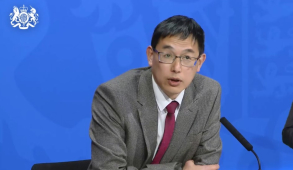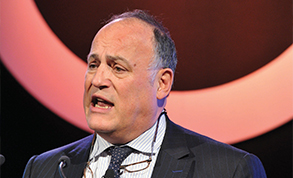Covid-19 update: 7 May
US president Joe Biden’s administration released a statement saying that the ‘extraordinary circumstances of the Covid-19 pandemic call for extraordinary measures’. It gave its support to the waiver of the intellectual property protections for Covid vaccines and would ‘actively participate in text-based negotiations at the World Trade Organization needed to make that happen’.
India and South America in particular continue to face alarming levels of infection and there are concerns about access to vaccines in many of the world’s poorer countries.
World Health Organization director general Tedros Adhanom Ghebreyesus described the US decision as a ‘monumental moment in the fight against Covid-19’ and a ‘powerful example of American leadership’. But not everybody is agreed it represents the right strategy.
The International Federation of Pharmaceutical Manufacturers and Associations said a waiver was the wrong answer to a complex problem. Waiving patents would not increase production. ‘On the contrary, it is likely to lead to disruption; while distracting from addressing the real challenges in scaling up production and distribution of Covid-19 vaccines globally: namely elimination of trade barriers, addressing bottlenecks in supply chains and scarcity of raw materials and ingredients in the supply chain, and a willingness by rich countries to start sharing doses with poor countries.’
In a speech on Thursday, European Commission president Ursula von der Leyen (pictured) said that the European Union was ‘ready to discuss’ the US proposal, but made no commitment beyond that. ‘In the short run, however, we call upon all vaccine-producing countries to allow exports and to avoid measures that disrupt supply chains,’ she said.
While Europe was initially slow to roll out its vaccination programme, in particular blaming major disputes with manufacturer AstraZeneca for problems with supply, Ms von der Leyen said it was now clear the ‘campaign is a success’. Europe was now vaccinating more than 3 million people per day and was on schedule to vaccinate 70% of all adults by July. She said that Europe had achieved this while ‘remaining open to the world’ and was the main exporter of vaccines worldwide.
Booster programme
In the UK, the government announced that it had secured an extra 60 million doses of the Pfizer/BioNTech vaccine to support a possible booster programme starting in the autumn. However, vaccines minister Nadhim Zahawi said no decision had yet been taken on whether over-50s would be offered a third jab before the winter.
The Joint Committee on Vaccination and Immunisation also updated its advice on continued use of the AstraZeneca vaccine in the UK. In April, following a small number of extremely rare events involving blood clots and low platelet counts in people receiving the vaccine, the committee advised that adults under 30-years without underlying health conditions should be offered an alternative vaccine.
It has now updated this advice to include everyone under 40 years. Wei Shen Lim (pictured), chair of the JCVI, said this was ‘specific to the current UK context’ and was based on continued good control of infection levels, the availability of alternative vaccines and the strength of the vaccine programme in terms of speed and uptake.
Meanwhile, the UK passed a further vaccine milestone this week with over 50 million doses now administered including 35 million first doses and 16 million seconds. This means that nearly 30% of the adult population has now received both jabs and data from Public Health England suggests vaccines had already saved more than 10,000 lives in England alone by the end of March. A recent study has also shown that one dose of the vaccine reduces transmission by up to a half.
However, concerns continue to mount about the potential for new variants of the virus to escape the current vaccines. Three versions of a coronavirus variant first found in India have so far been detected across the UK – all with slightly different genetic mutations. One in particular is now causing concern. Known as B.1.617.2, it appears to spread more quickly than the others and now makes up the majority of all the Indian variant cases in the UK. More than 500 cases have now been found according to the latest report from Public Health England – up 318 from last week – with the first cases also discovered this week in Northern Ireland. It has now been elevated from simply being under investigation to being a variant of concern.
In response, the government is investing a further £30m in Public Health England’s new testing facilities at Porton Down to assess the effectiveness of existing and new vaccines against variants of concern. The site tests for the level of antibodies to Covid-19 that are generated by the vaccines and the funding will mean it can test 3,000 blood samples a week, compared to just 700 currently.
Dr Jenny Harries, chief executive at the UK Health Security Agency, said that new variants were the greatest risk of a third wave. ‘This new investment will help us stay one step ahead of the virus by doubling our capacity to test vaccine effectiveness against emerging variants,’ she said. ‘While we expect the existing vaccines to offer protection against new variants, particularly preventing serious illness and death, it is important that we continue to monitor the picture as it develops.’
Daily cases remain around the 2,000 mark, while deaths within 28 days of a positive test are now in single figures on some days – a far cry from the first wave last year and the second wave just after Christmas. Looking back at that first wave, a new study from the Getting It Right First Time programme found no evidence of unwarranted variation in rates of death in different hospitals across England. The study – published in the Lancet’s EClinicalMedicine journal – is believed to be the largest analysis of of Covid-19 hospital mortality in any country published to date.
GIRFT study
Of just over 86,000 patients with a confirmed diagnosis of Covid-19 included in the study, nearly 23,000 (27%) died in hospital with Covid as the primary cause. While early reports in 2020 suggested higher death rates in some hospitals, the GIRFT study concluded that variation in in-hospital rates across the seven English regions and between the 126 non-specialist NHS trusts was modest. However, hospitals with more beds and a higher proportion of patients admitted to critical care had better outcomes.

GIRFT chair and national director of clinical improvement for the NHS Tim Briggs (pictured) said the rapid increase in patient flow during the first wave had strained hospital systems everywhere. ‘But there are now opportunities to learn from the experience of individual trusts and regional networks to help prepare the NHS for the management of Covid-19 patients during future surges,’ he added. ‘Understanding the experience of staff and wider systems at a regional, trust and hospital level, and exploring the reasons for any smaller variations with clinicians, is now crucial to ensure that lessons are learned.’
Hospital admissions also remain low at just over 100 per day and about 1,300 Covid patients in hospital beds. The continuing decline of the virus was echoed by the latest report from NHS Test and Trace in England. Its report for the week to 28 April highlighted a further 8% fall in the number of people testing positive for coronavirus. This downwards trend now stretches back to the beginning of January.
Nearly 11,000 cases were transferred to the contact tracing system, just over 1,000 of which (10%) could not be reached or had failed to provide communication details. Of the 9,700 people reached, 7,800 (81%) identified 49,000 close contacts and 84% of these were reached and advised to self-isolate.
The results for nine out of 10 in-person tests in the community were delivered within 24 hours. The latest figures for the managed quarantine service show that just over 15,000 people started quarantining at home during the week while a further 6,000 did so in a managed quarantine hotel. To date this means that 478,000 people have started quarantining at home or in a hotel since the service started in February.
Layla McCay (pictured), director of policy at the NHS Confederation, said the continuing fall in Covid-19 cases was thanks to the vaccination programme, social distancing and other infection control measures. At the same time, NHS teams had worked flat out to provide care for all patients.
‘However, we must all continue to exercise caution, continue to monitor variants of concern, and make good decisions to sustain this progress, keep these figures going in the right direction, and avoid the sort of situation we experienced in January this year, with tens of thousands of people in hospital with the virus,’ she said. And she underlined that testing and tracing remained important so that surges could be halted promptly – warning the government to ‘think carefully before reducing staff numbers’.
Under pressure
While daily Covid admissions are now back at the levels last seen in August and early September last year – and 35 times lower than the high point in January – the NHS still faces significant pressure and a lengthy recovery.
‘Working at full pelt’ was how NHS Providers chief executive Chris Hopson described it when he spoke to the BBC’s Today programme this week. The NHS’s immediate concerns were continuing to deliver the vaccination programme, treating urgent delayed cases including cancer as fast as possible, tackling other pandemic-related issues such as long Covid and responding to a spike in mental health demand.
‘And looking to the longer term, we're rapidly developing a multi-year plan to tackle the very large care backlogs that have been built up as a result of Covid-19,’ he said. The next stage of the change would be more difficult and would involve three tasks.
‘First, we've got to reconfigure the NHS to cope with Covid for the medium term, including annual vaccination campaigns, tight infection control and permanent test and trace capacity,’ he said. ‘Secondly, we've got to deliver the improvements in cancer healthcare, children's health and mental health that were set out in the long-term plan. And thirdly, we've got to get through the care backlog. On current trajectories, that could take something like three to five years.’
The NHS recognised it had to change the way it provided care, but he said the government had to fund that transformation. The spending review at the end of the year would be crucial and would also need to ‘sort out social care’.
A report by a commission set up by the London School of Economics and the Lancet medical journal has estimated that total expenditure on health, social care and public health will need to increase by £102bn in real terms over the next decade. It said that after the pandemic and leaving the EU, the UK faced a ‘once-in-a-generation opportunity to invest in the health of all its population and secure the long-term future of the NHS’.
The funding would help improve survival rates from cancer and heart disease, address health inequalities and tackle staff and bed shortages that were highlighted during the pandemic.
The report added that if tax revenue returned to pre-pandemic amounts and then grew with GDP, then £37bn of the increase could be funded from the increased revenue, leaving a £65bn funding gap, which would require reform to several taxes. The increase would mean committing to annual increases of 4% in real terms for the NHS, social care and public health over the next decade as well as an immediate additional uplift in funding for social care and public health.
Related content
The Institute’s annual costing conference provides the NHS with the latest developments and guidance in NHS costing.
The value masterclass shares examples of organisations and systems that have pursued a value-driven approach and the results they have achieved.